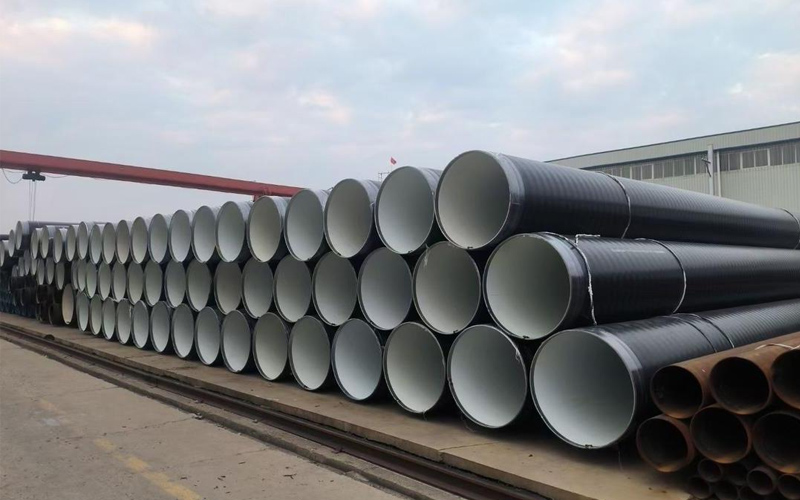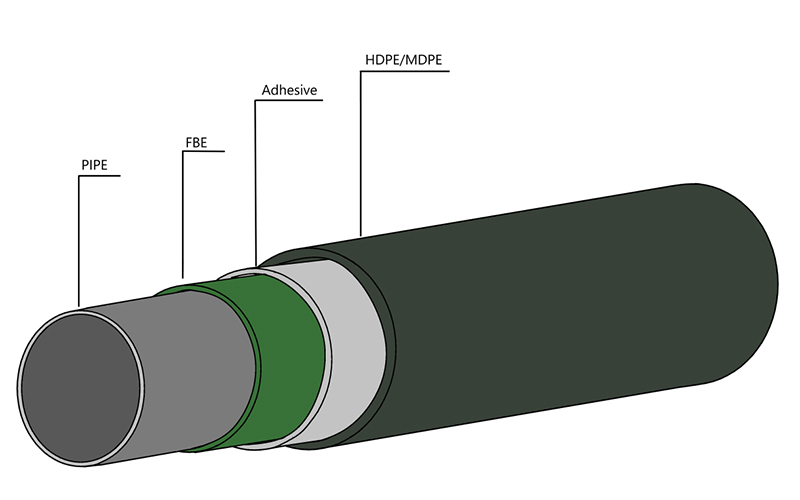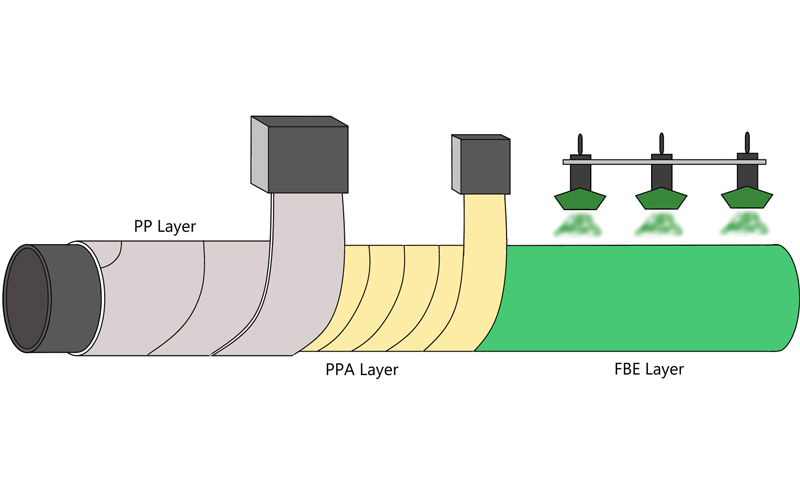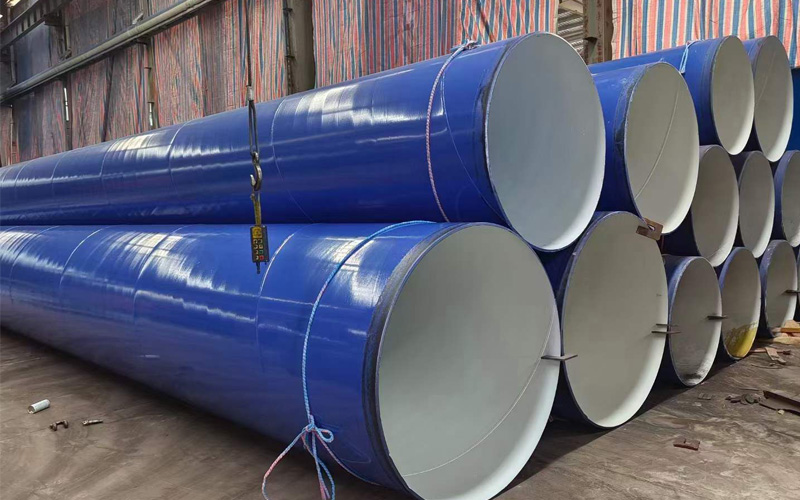ASTM A53 LSAW Steel Pipe Selection Guide for Oil and Gas Transportation Pipelines
Introduction: Cracking the oil and gas pipeline sizing problem, the key to balancing safety and cost
In the field of oil and gas transportation, pipeline selection is the core link that determines the success or failure of a project. How to ensure safe transportation under severe working conditions while avoiding cost wastage caused by over-design? According to data, incorrect pipe sizing can lead to a 30% increase in operation and maintenance costs, and even lead to major safety accidents such as leaks and explosions. As an important material for oil and gas pipeline construction, ASTM A53 LSAW steel pipe has become the preferred solution for low and medium pressure transportation scenarios due to its excellent comprehensive performance. In this article, we will present you a scientific and rigorous selection guide from the dimensions of technical characteristics, selection logic and actual cases, which will help you make accurate decisions in complex working conditions.
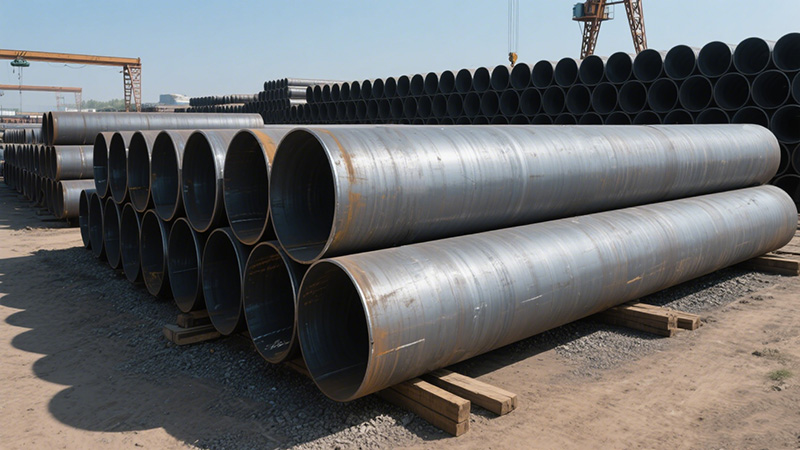
ASTM A53 LSAW steel pipe core characteristics and standards analysis
(I) Technical parameters: core indicators for constructing performance baselines
The core technical parameters of LSAW steel pipe according to ASTM A53-20 are as follows:
1. Mechanical properties
Yield strength (Min.): 205MPa (Grade A) / 245MPa (Grade B)
Tensile strength (Min.): 330MPa (Grade A) / 415MPa (Grade B)
Elongation (Min.): 25% (200mm spacing) This performance parameter ensures that the steel pipe has sufficient deformation resistance in low and medium pressure transportation scenarios (≤8MPa), especially suitable for laying environments with complex terrain and frequent load changes.
2. Control of chemical composition
| elemental | Content limits (Grade B) | Impact on performance |
| C | ≤0.30% | Carbon equivalent control for improved welding performance |
| S | ≤0.05% | Reduced risk of thermal embrittlement |
| P | ≤0.04% | Reduction of cold embrittlement tendency |
| Strict chemical composition control is the basis for the pipe’s excellent weldability and corrosion resistance, especially in wet or acidic soil environments. |
3. Process requirements: defining high quality manufacturing standards
Molding process: adopting LSAW technology, through pre-bending, molding, internal welding, external welding four processes, to ensure that the weld depth is uniform, the strength of welded joints ≥ 85% of the base material.
Inspection standards: implementation of 100% ultrasonic testing (UT) + radiation testing (RT), weld defect identification accuracy of up to 0.5mm, far beyond the industry’s conventional sampling standards.
(II) Comparative Advantages: Why is LSAW better suited for low and medium voltage scenarios?
ASTM A53 LSAW steel pipe offers significant advantages over high-frequency resistance welded (ERW) steel pipe in key performance areas:
| Performance indicators | LSAW steel pipe (ASTM A53) | ERW steel pipe (ASTM A106) | Application Differences |
| Wall thickness range | 6-40mm | 3-12mm | Suitable for high-pressure thick-walled requirements (e.g., river crossings, embankment sections) |
| Maximum working pressure | ≤8MPa | ≤4MPa | Preferred for medium-voltage scenarios (e.g., city loop networks, feeder pipelines) |
| Weld Toughness | -20℃ impact work ≥47J | -20℃ impact work ≥27J | Higher safety in low-temperature environments |
| Masterbatch utilization | 98% or more | Below 95% | Better material cost control |
III. Selection of key factors and decision logic
(i) Pressure levels: first guideline for defining applicable scenarios
1.Low-pressure scenario (≤4MPa)
Typical applications: city gas household network, process piping in refineries
Selection points: Grade A steel pipe is preferred (15% lower cost), wall thickness is calculated by corrosion allowance + minimum strength (formula: t = PD/(2 [σ]φ) + C, where P = design pressure, D = outer diameter, [σ] = allowable stress, φ = weld factor = 0.9, C = corrosion allowance of 3 mm).
2.Medium Pressure Scene (4-8MPa)
Typical applications: long distance natural gas feeder lines, oil field gathering pipelines
Selection points: Grade B steel pipe must be used, recommended wall thickness 8-16mm (need to pass ASME B31.8 strength calibration), focus on the impact toughness of the weld (-20 ℃ impact work ≥ 60J).
(ii) Corrosive environments: design of life-cycle protection programs
1.Comparison and cost modeling of anti-corrosion solutions
| Anti-corrosion program | Initial cost (yuan / square meter) | service life | Applicable environment | Maintenance costs (years/kilometers) |
| FBE Coating | 80-120 | 10-15 years | Neutral soil (pH=6-8) | 500-800 |
| Triple PE Coating | 200-300 | 20-25 years | Strongly corrosive soils (pH < 6 or > 9) | 200-300 |
| Cathodic Protection + Coating | 300-400 | 30 years + | Marine mudflats, saline soils | 1000-1500 (including anode replacement) |
Total Life Cycle Cost formula: LCC = C_p + C_i \times n + C_m \times t + C_r \times (1-\delta)^t (where: C_p = purchase cost, C_i = cost of inspection, n = number of inspections, C_m = annual maintenance cost, t = useful life, C_r = replacement cost, \delta = 5% salvage rate)
2.Acidic media coping strategies
When the partial pressure of H2S in the medium is > 0.0003MPa or the partial pressure of CO2 is > 1.4MPa, the material needs to be upgraded:
Add Cr (1-3%) and Mo (0.5-1%) alloying elements to enhance the resistance to sulfide stress corrosion (SSCC);
The PWHT (post weld heat treatment) process is used to reduce the hardness of the weld zone (≤250HV10);
Strictly control the HIC (hydrogen-induced cracking) properties of the material (CLR≤1.5%, CTR≤0.5%, CSR≤0.01%).
(iii) Cost modeling: full chain calculations from procurement to decommissioning
Take DN500 pipeline (10km) as an example:
| Cost items | ASTM A53 LSAW (Gr. B) | API 5L X52 | variance rate |
| Initial purchase price | 4.8 million dollars | 6.2 million dollars | -22.6% |
| Testing costs | $150,000 (100% UT/RT) | $250,000 | -40% |
| Annual maintenance costs | 80,000 dollars | $120,000 | -33.3% |
| Life cycle (years) | 20 | 25 | -20% |
| LCC Current value | $8.9 million (i=8%) | 12.6 million dollars | -29.4% |
Third, common misunderstandings and avoidance guide
Myth 1: “ASTM A53 is an alternative to API 5L for high pressure scenarios”
Truth: ASTM A53 has a maximum design pressure of 8MPa, while API 5L X65 can withstand more than 12MPa. A shale gas field once mistakenly used A53 steel pipe, resulting in fatigue cracking of weld seams after 3 years and an increase of 2 million yuan in maintenance costs.
Pit Avoidance Points: API 5L or GB/T 9711-2023 standard steel pipe must be used for high pressure scenarios (>8MPa) and additional pressure cycle testing (PAT) is required.
Myth 2: “The thicker the anti-corrosion coating, the better the anti-corrosion effect.”
Truth: The optimum thickness of epoxy powder coatings (FBE) is 80-150μm:
<80μm: Elevated pinhole rate and easy penetration of salt into the substrate;
150μm: the coating internal stress increases, easy to crack (a coastal project due to the coating is too thick, 5 years a large area of spalling).
Pothole avoidance: According to ISO 21809-3, the thickness of the coating must be combined with the soil resistivity (150μm recommended for ρ < 50 Ω・m, 80μm for ρ > 50 Ω・m).
Myth 3: “Weld testing can be done on a sample basis to reduce costs”
Truth: ASTM A53 clearly requires 100% non-destructive testing, and sampling (e.g., 5% ray testing) may miss detection of hazardous defects (e.g., unfused, cracks). An oil pipeline was put into service one year later due to leakage of welds and a diesel oil leakage, and the environmental protection fine amounted to 5 million RMB.
Avoid pitfalls: choose manufacturers with CWB certification, request root-by-root test reports (including UT charts, RT negative numbers), and reject “batch sampling” products.
Fourth, the actual case: a natural gas feeder project selection of the whole analysis
Project Background
Conveying medium: natural gas (50ppm H2S, 3% CO2)
Design pressure: 6MPa, pipe diameter: DN508 (20″), length: 35km
Laying environment: southern red soil area (pH=5.5, moisture content 25%), crossing 3 rivers
Selection process
1.Pressure classification: 6MPa belongs to the medium-pressure scenario, locking Grade B steel pipe, the calculation of the minimum wall thickness: t = \frac{6 × 508}{2 × 245 × 0.9} + 3 = 8.7 + 3 = 11.7mm final selection of 12mm wall thickness.
2.Corrosion protection:
The medium contains acid gas, NACE MR0175 standard, the required weld hardness ≤ 230HV10;
The soil is acidic and three PE coatings (base layer FBE 100μm + intermediate binder + outer PE 3mm) with magnesium alloy sacrificial anodes (500m spacing) were selected.
3.Program Comparison:
Initially, the API 5L X52 program was proposed at a cost of $6.8 million with a 3-year testing cycle;
Optimized to ASTM A53 Gr.B solution at a cost of $5.6 million, with a life expectancy of 25 years through the addition of cathodic protection ($12,000 annual cost increase).
Effectiveness of implementation
Cost Effectiveness: 18% savings and 26% reduction in whole life costs compared to API 5L program;
Quality control: 100% weld inspection shows 0% defect rate (industry average is 0.3-0.5%);
Operational performance: no leakage after 5 years of operation, cathodic protection potential stabilized at – 0.85V (CSE), better than the standard requirement (≥-0.85V).
V. Rapid selection flowchart: 5 steps to lock the optimal program
| Start → Determination of medium parameters (pressure/temperature/corrosivity) ↓ Pressure ≤ 8MPa? ├─ Yes → enter ASTM A53 system │ ├─ Corrosion assessment (soil/medium) │ │─ General Environment → FBE Coating + Wall Thickness Calculation │ └─ Strong corrosion → three-layer PE + cathodic protection + alloy upgrade │ └─ Mechanical verification (yield strength/impact toughness) └─ No → Switch to API 5L high pressure system ↓ Determination of material grade (Grade A/B) ↓ Choice of surface treatment (bare tube/coating/cathodic protection) ↓ Generate selection program (with test report/process documentation) → End |
Conclusion: scientific selection, so that every meter of piping becomes a safety line of defense
Selection of ASTM A53 LSAW steel pipe is not only a comparison of technical parameters, but also a systematic integration of working conditions, costs and specifications. From the precise control of chemical composition to the strict standards of weld testing, from the economic analysis of anti-corrosion program to the experience of actual cases, each link needs professional technical support and data verification. As a leading steel pipe supplier in China, we rely on the technical advantages of strategic partners such as Baosteel and Tianjin Steel Pipe to provide a full chain of solutions from material research and development, process design to on-site service to ensure that each pipe can withstand the double test of time and working conditions. Contact us now to get the exclusive selection program, so that safety and efficiency can coexist perfectly in your pipeline projects.
Get Your Custom Steel Pipe Quote Today!
Provide us with your project details (like application, specifications, quantity). Our experienced team will respond with a tailored solution and competitive quote within 24 business hours.
Related Articles
ASTM A53 vs. API 5L: A Guide to Selection and Application
Introduction:Technology differences determine success or failure, and selection needs to be “precise”
Steel Density Analysis: Core Differences between Mild and Medium Carbon Steels and Industrial Applications
3LPE coated steel pipe: a solid barrier in the field of industrial corrosion protection
3LPP coated pipe: anti-corrosion guard in high temperature and high pressure environment
FBE steel pipe: the technological armor of the steel defense line
HOT TAGS
latest posts
- FBE steel pipe: the technological armor of the steel defense line
- Precision Engineering Redefined Dubai’s Stadium Dome Construction
- An Engineer’s Guide: A Deep Dive into UOE vs. JCOE LSAW Steel Pipe Manufacturing
- Floating Pipelines: Key Views on Offshore Dynamic Risers & Marine Transportation Pipelines
- The Dance of Spiral Forming: How SSAW Steel Pipes Are Made











